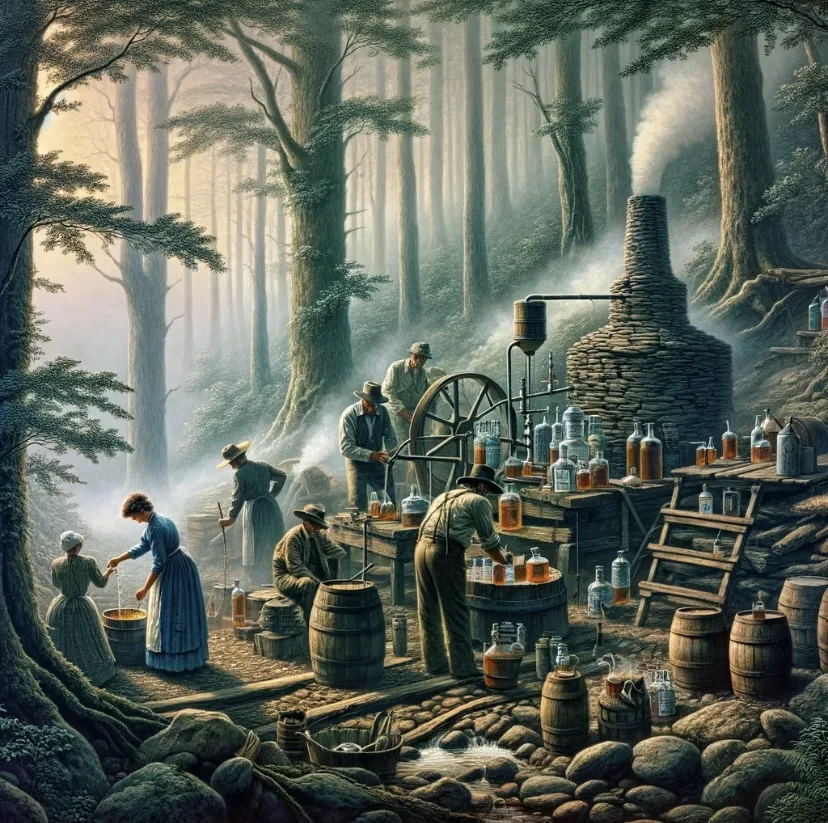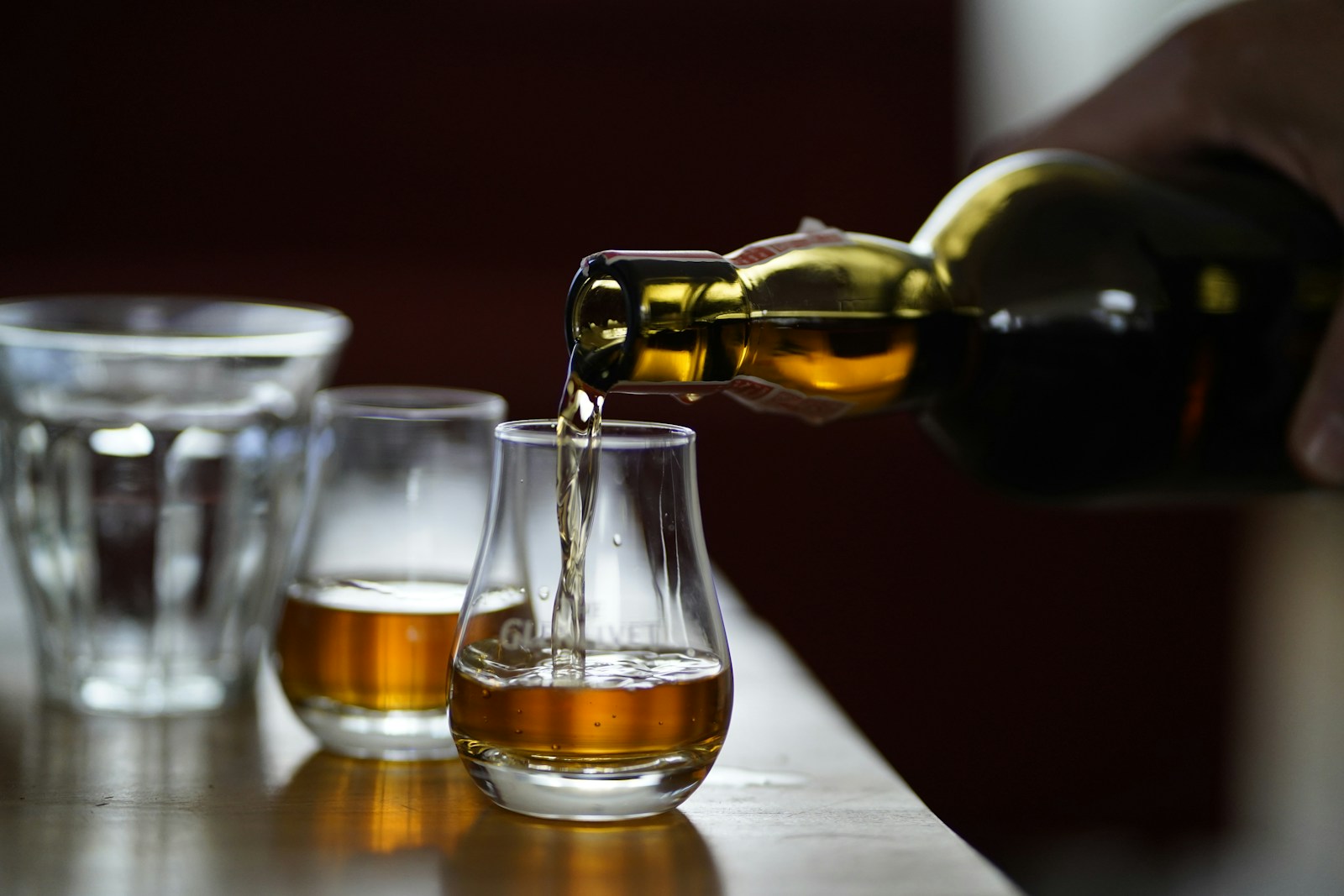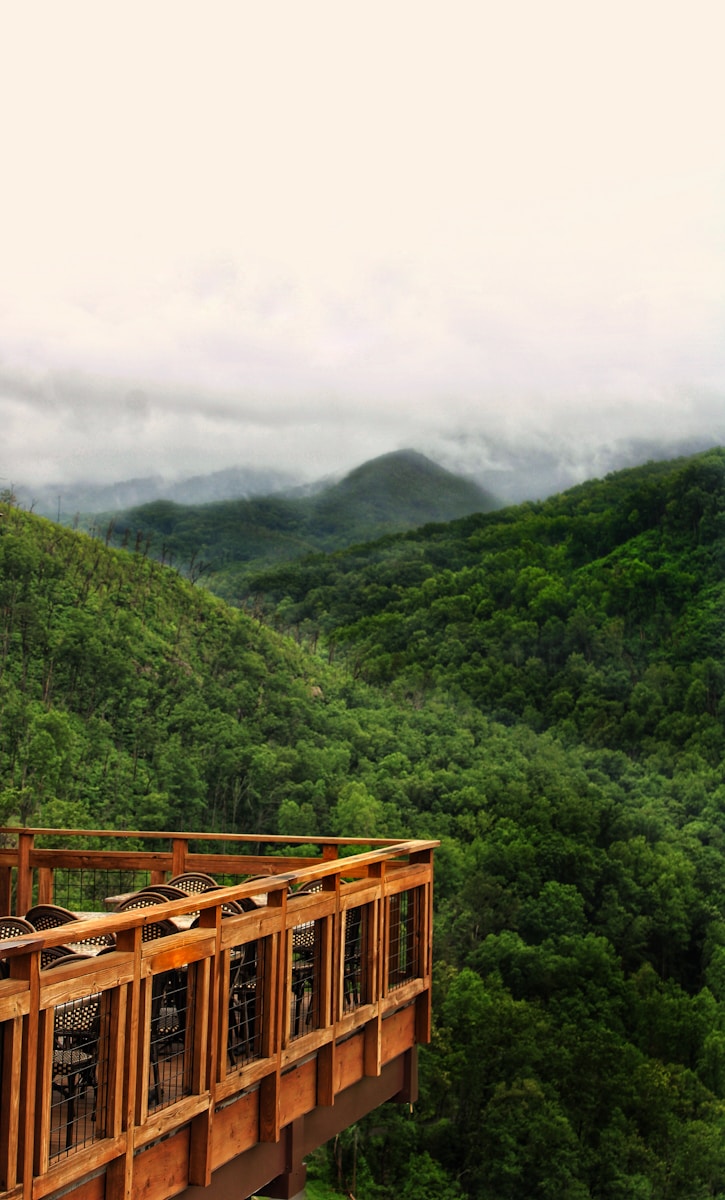Step into the rich history of the Smoky Mountains and uncover the hidden world of moonshine production. This captivating article explores the origins of moonshine, tracing it back to Scottish-Irish immigrants who brought their distilling practices to the Appalachian region. Delve into the impact of Prohibition on the production of illicit moonshine, and discover the stories of famous moonshiners and their clash with law enforcement.
Learn about the traditional techniques and natural resources used in moonshine production, as well as the family traditions and secrecy surrounding recipes and methods. Explore the role of moonshine in local culture and its significance to the region’s economy. From the modern revival and legalization of moonshine to its impact on tourism, this article uncovers the enduring legacy of moonshine in the Smoky Mountains.

Hidden History of Moonshine In The Smoky Mountains – Early Beginnings
Origin of moonshine: distilling practices brought by Scottish-Irish immigrants.
Moonshine production in the Smoky Mountains can be traced back to the early settlers who brought with them a tradition of distilling spirits. The Scottish-Irish immigrants who arrived in the Appalachian region brought their knowledge and techniques of distilling alcohol, which laid the foundations for moonshine production in the area. These practices, passed down through generations, became deeply ingrained in the culture and traditions of the Appalachian people.
Adaptation of moonshine production in the Appalachian region, including the Smoky Mountains.
As moonshine production was established in the Appalachian region, it underwent adaptations to suit the local environment and available resources. This resulted in the development of unique techniques and traditions specific to the Smoky Mountains. The rugged terrain, ample water sources, and abundant wild plants provided ideal conditions for moonshiners to carry out their craft. The secluded nature of the mountains also allowed moonshiners to operate in secrecy and avoid detection.
Moonshine and Prohibition
Impact of the Prohibition era (1920-1933) on moonshine production.
The Prohibition era, which lasted from 1920 to 1933, had a profound impact on moonshine production in the Smoky Mountains. With the nationwide ban on the sale and production of alcoholic beverages, demand for homemade spirits surged. The remote and mountainous areas of the Smoky Mountains became hotspots for illicit distilling, as moonshiners capitalized on the opportunity to supply alcohol to a thirsty population.
Rise in illicit distilling and smuggling operations in the Smoky Mountains.
During Prohibition, the Smoky Mountains became a hub for clandestine distilling and smuggling operations. Moonshiners utilized intricate networks of hidden stills and secret routes through the mountains to produce and transport their illegal alcohol. The law enforcement attempts to crack down on moonshiners often led to intense and dangerous clashes, with the mountains providing a natural advantage for the moonshiners to evade capture.
Stories of famous moonshiners and law enforcement clashes.
The history of moonshine in the Smoky Mountains is filled with stories of notorious moonshiners and their encounters with law enforcement. Legends such as Popcorn Sutton and Marvin “Popcorn” Sutton became iconic figures in the moonshine culture, known for their skill in distilling and their defiance of the authorities. These stories of rebellious moonshiners and the cat-and-mouse games they played with law enforcement have become part of the region’s folklore.

Techniques and Traditions
Description of traditional moonshine production techniques.
Traditional moonshine production in the Smoky Mountains involves a meticulous process that starts with fermenting grains such as corn, barley, or rye. The fermented mash is then distilled in copper stills to extract the alcohol. Moonshiners often utilize homemade moonshine stills and time-honored methods that have been passed down through generations, ensuring the preservation of tradition in the craft.
Importance of natural resources in the Smoky Mountains for moonshine making.
The Smoky Mountains offer a rich abundance of natural resources that are vital for moonshine production. The pristine water sources found in the mountains are crucial for creating the mash and maintaining the quality of the distilled spirits. Additionally, the diverse flora of the Smoky Mountains, including wild herbs and fruits, provides moonshiners with the opportunity to infuse unique flavors into their moonshine recipes, contributing to the distinct character of the spirits.
Family traditions and secrecy surrounding recipes and methods.
Moonshine production in the Smoky Mountains is often deeply rooted in family traditions and passed down through generations. Families guard their recipes and methods as closely held secrets, ensuring the preservation and continuation of their unique moonshine heritage. This secrecy adds to the mystique and allure of moonshine, turning it into a cherished family tradition that strengthens the bond between generations.
Moonshine in Local Culture and Economy
Role of moonshine in local culture and as a means of economic survival.
Moonshine has played a significant role in the culture and economy of the Smoky Mountains. It has become a symbol of self-reliance and resourcefulness, representing a way of life deeply ingrained in the region’s history. Moonshine production has also served as a means of economic survival for many families in the Smoky Mountains, providing them with a source of income during times of economic hardship.
Social gatherings, music, and folklore associated with moonshine.
Moonshine has inspired a vibrant culture in the Smoky Mountains, centered around social gatherings, music, and folklore. Moonshine played a role in community gatherings, where neighbors would come together to share homemade spirits and celebrate their cultural heritage. The music of the mountains, including genres such as bluegrass and country, often reflects the themes of moonshine and the struggles of moonshiners. The rich folklore surrounding moonshine has given rise to countless stories and legends that continue to captivate locals and visitors alike.

Modern Revival and Legalization
Changes in laws leading to the legalization of moonshine production.
In recent years, there have been changes in laws and regulations surrounding the production of moonshine, leading to its legalization in certain areas of the Smoky Mountains. This shift in legislation has opened up opportunities for legal distilleries to operate and contribute to the region’s economy. While the craft may have lost some of its illicit nature, legal moonshine producers strive to maintain the traditions and quality associated with the historic moonshine heritage.
Emergence of legal distilleries in the Smoky Mountains.
The legalization of moonshine production has paved the way for the emergence of legal distilleries in the Smoky Mountains. These distilleries adhere to strict regulations and licensing requirements while producing moonshine using traditional techniques and locally sourced ingredients. By establishing a legal industry, these distilleries have become significant contributors to the local economy, attracting both residents and tourists with their authentic moonshine offerings.
Modern moonshine: blending tradition with new flavors and techniques.
As moonshine has entered the modern era, distillers have begun to experiment with new flavors and techniques while still embracing the traditional roots of the craft. Modern moonshine offerings now include a wide range of flavored options, such as apple pie, peach, and cinnamon, appealing to a broader consumer base. While innovation has brought new possibilities, moonshine producers remain committed to the authenticity and heritage of the drink.
Impact on Tourism
Moonshine’s role in attracting tourists to the Smoky Mountains.
Moonshine has become a significant draw for tourists visiting the Smoky Mountains. The allure of experiencing the region’s rich moonshine heritage has led to an increase in tourism. Visitors are drawn to the unique history and culture associated with moonshine production, wishing to witness firsthand the craft and taste the authentic spirits produced in the mountains.
Tours and tastings offered by local distilleries.
Local distilleries now offer tours and tastings, providing visitors with an immersive experience into the world of moonshine production. These tours often include educational insights into the history and techniques of moonshine, as well as the opportunity to sample a range of moonshine products. These experiences have become popular among tourists, as they offer a glimpse into the traditions and craftsmanship that have shaped the region.
Festivals and events celebrating the moonshine heritage.
The Smoky Mountains host a variety of festivals and events that celebrate the rich moonshine heritage of the region. These events showcase the culture, music, and craftsmanship associated with moonshine, attracting visitors from near and far. Festivals often feature live performances, tastings, and the opportunity to interact with moonshine producers, providing a lively and engaging experience for attendees.

Conclusion
Reflecting on the hidden history of moonshine in the Smoky Mountains, it is evident that this rugged and remote region has played a crucial role in the production, culture, and economy of moonshine. From its early beginnings brought by Scottish-Irish immigrants to the resilient moonshiners who defied the Prohibition era, moonshine has left an indelible mark on the region. Today, legal distilleries continue to honor the traditions of moonshine production while adapting to modern tastes and preferences. Moonshine’s enduring legacy in the Smoky Mountains serves as a reminder of the resourcefulness and spirit of the people who call this region home.





Leave a Reply